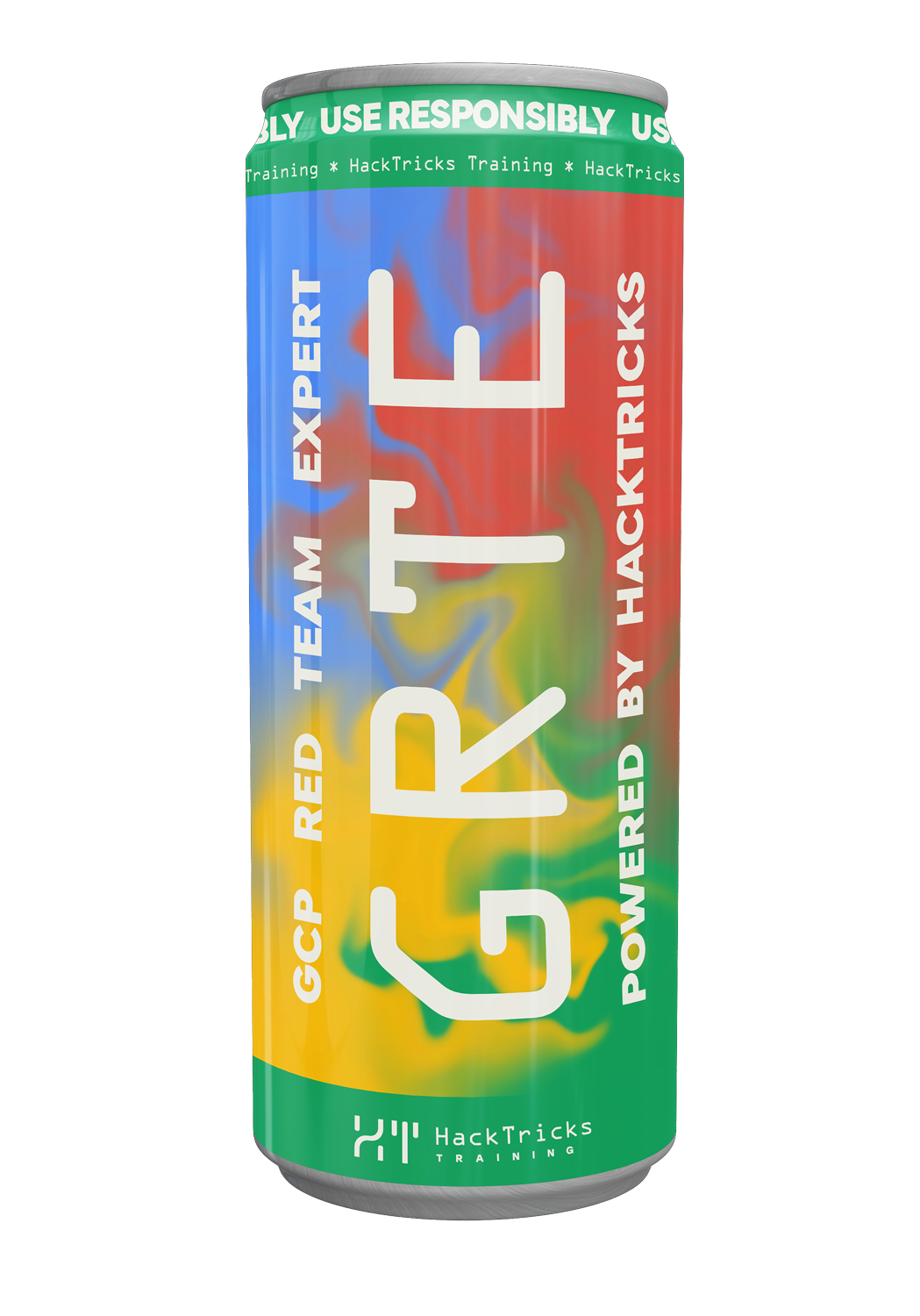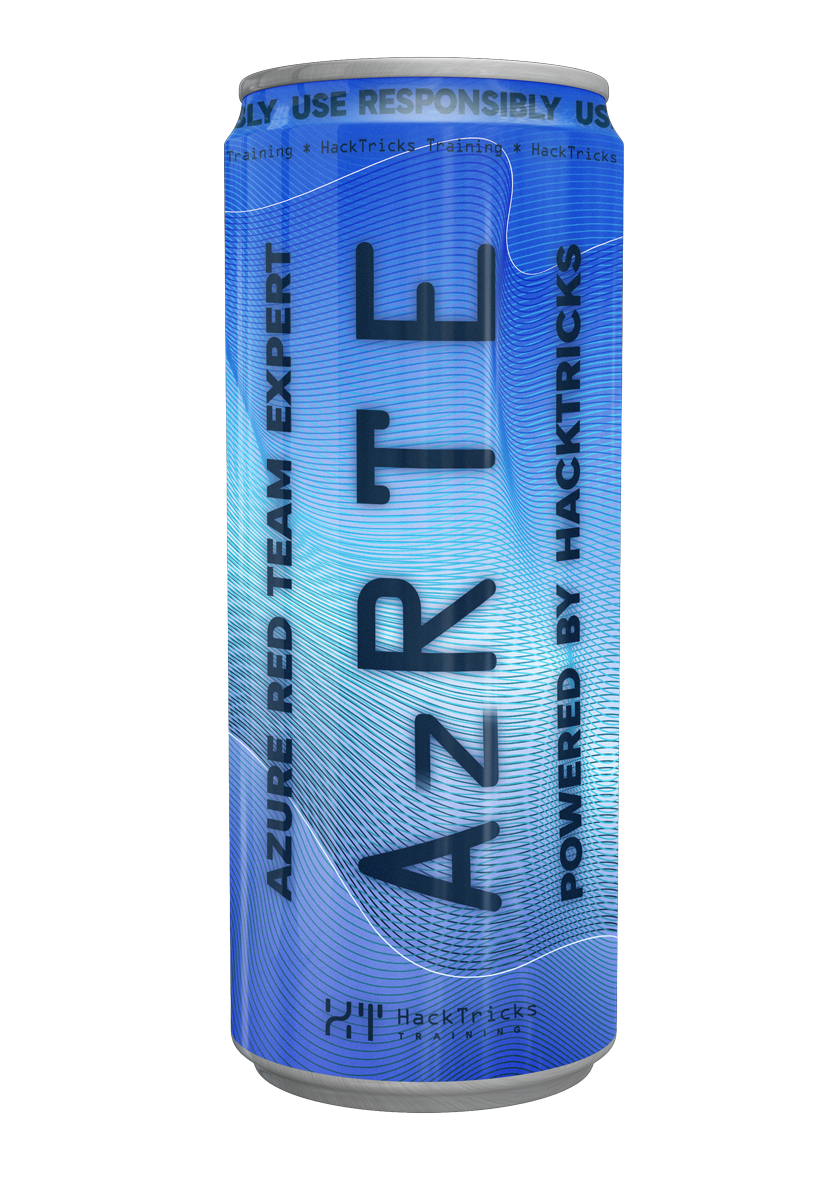Az - Zana za Kuorodhesha
Reading time: 17 minutes
tip
Jifunze na fanya mazoezi ya AWS Hacking: HackTricks Training AWS Red Team Expert (ARTE)
HackTricks Training AWS Red Team Expert (ARTE)
Jifunze na fanya mazoezi ya GCP Hacking:  HackTricks Training GCP Red Team Expert (GRTE)
HackTricks Training GCP Red Team Expert (GRTE) Jifunze na fanya mazoezi ya Azure Hacking:
Jifunze na fanya mazoezi ya Azure Hacking:  HackTricks Training Azure Red Team Expert (AzRTE)
HackTricks Training Azure Red Team Expert (AzRTE)
Support HackTricks
- Angalia mpango wa usajili!
- Jiunge na 💬 kikundi cha Discord au kikundi cha telegram au tufuatilie kwenye Twitter 🐦 @hacktricks_live.
- Shiriki mbinu za hacking kwa kuwasilisha PRs kwa HackTricks na HackTricks Cloud repos za github.
Sakinisha PowerShell kwenye Linux
tip
Kwenye linux utahitaji kusakinisha PowerShell Core:
sudo apt-get update
sudo apt-get install -y wget apt-transport-https software-properties-common
# Ubuntu 20.04
wget -q https://packages.microsoft.com/config/ubuntu/20.04/packages-microsoft-prod.deb
# Update repos
sudo apt-get update
sudo add-apt-repository universe
# Install & start powershell
sudo apt-get install -y powershell
pwsh
# Az cli
curl -sL https://aka.ms/InstallAzureCLIDeb | sudo bash
Sakinisha PowerShell kwenye MacOS
Maelekezo kutoka kwenye documentation:
- Sakinisha
brewikiwa bado haijasakinishwa:
/bin/bash -c "$(curl -fsSL https://raw.githubusercontent.com/Homebrew/install/HEAD/install.sh)"
- Sakinisha toleo thabiti la PowerShell la hivi karibuni:
brew install powershell/tap/powershell
- Endesha PowerShell:
pwsh
- Sasisho:
brew update
brew upgrade powershell
Zana Kuu za Uorodheshaji
az cli
Azure Command-Line Interface (CLI) ni zana ya kuvuka-mifumo iliyandikwa kwa Python kwa kusimamia na kuendesha (sehemu kubwa ya) rasilimali za Azure na Entra ID. Inajiunga na Azure na inatekeleza amri za usimamizi kupitia mstari wa amri au skripti.
Tazama maelekezo ya usakinishaji.
Amri katika Azure CLI zimepangwa kwa kutumia muundo: az <service> <action> <parameters>
Debug | MitM az cli
Kutumia parameta --debug inawezekana kuona maombi yote ambayo zana az inazituma:
az account management-group list --output table --debug
Ili kufanya MitM kwa zana na kuangalia maombi yote inayoituma kwa mkono unaweza kufanya:
export ADAL_PYTHON_SSL_NO_VERIFY=1
export AZURE_CLI_DISABLE_CONNECTION_VERIFICATION=1
export HTTPS_PROXY="http://127.0.0.1:8080"
export HTTP_PROXY="http://127.0.0.1:8080"
# If this is not enough
# Download the certificate from Burp and convert it into .pem format
# And export the following env variable
openssl x509 -in ~/Downloads/cacert.der -inform DER -out ~/Downloads/cacert.pem -outform PEM
export REQUESTS_CA_BUNDLE=/Users/user/Downloads/cacert.pem
Az PowerShell
Azure PowerShell ni module yenye cmdlets za kusimamia Azure resources moja kwa moja kutoka kwenye PowerShell command line.
Fuata kiunga hiki kwa ajili ya installation instructions.
Amri katika Azure PowerShell AZ Module zimeundwa kama: <Action>-Az<Service> <parameters>
Debug | MitM Az PowerShell
Ukikitumia parameter -Debug, inawezekana kuona maombi yote yanayotumwa na zana:
Get-AzResourceGroup -Debug
Ili kufanya MitM kwenye zana na kuangalia maombi yote inayotumwa kwa mikono, unaweza kuweka vigezo vya mazingira HTTPS_PROXY na HTTP_PROXY kulingana na docs.
Microsoft Graph PowerShell
Microsoft Graph PowerShell ni SDK ya kuvuka-majukwaa inayowawezesha kufikia Microsoft Graph APIs zote, ikijumuisha huduma kama SharePoint, Exchange, na Outlook, kwa kutumia endpoint moja. Inasaidia PowerShell 7+, uthibitishaji wa kisasa kupitia MSAL, vitambulisho vya nje, na query za hali ya juu. Kwa kuzingatia upatikanaji wa least privilege, inahakikisha operesheni salama na hupokea masasisho ya mara kwa mara ili kuendana na vipengele vya hivi karibuni vya Microsoft Graph API.
Follow this link for the installation instructions.
Commands in Microsoft Graph PowerShell are structured like: <Action>-Mg<Service> <parameters>
Debug Microsoft Graph PowerShell
Kwa kutumia parameter -Debug, inawezekana kuona maombi yote ambayo zana inayotuma:
Get-MgUser -Debug
AzureAD Powershell
Module ya Azure Active Directory (AD), sasa deprecated, ni sehemu ya Azure PowerShell kwa kusimamia rasilimali za Azure AD. Inatoa cmdlets kwa kazi kama kusimamia watumiaji, vikundi, na usajili wa programu ndani ya Entra ID.
tip
Hii imebadilishwa na Microsoft Graph PowerShell
Tumia kiunga hiki kwa installation instructions.
Zana za Uchunguzi wa Otomatiki na Uzingatiaji
turbot azure plugins
Turbot pamoja na steampipe na powerpipe huwasaidia kukusanya taarifa kutoka Azure na Entra ID na kufanya ukaguzi wa uzingatiaji na kugundua mipangilio isiyo sahihi. Moduli za Azure zinazopendekezwa kwa sasa kuendesha ni:
- https://github.com/turbot/steampipe-mod-azure-compliance
- https://github.com/turbot/steampipe-mod-azure-insights
- https://github.com/turbot/steampipe-mod-azuread-insights
# Install
brew install turbot/tap/powerpipe
brew install turbot/tap/steampipe
steampipe plugin install azure
steampipe plugin install azuread
# Config creds via env vars or az cli default creds will be used
export AZURE_ENVIRONMENT="AZUREPUBLICCLOUD"
export AZURE_TENANT_ID="<tenant-id>"
export AZURE_SUBSCRIPTION_ID="<subscription-id>"
export AZURE_CLIENT_ID="<client-id>"
export AZURE_CLIENT_SECRET="<secret>"
# Run steampipe-mod-azure-insights
cd /tmp
mkdir dashboards
cd dashboards
powerpipe mod init
powerpipe mod install github.com/turbot/steampipe-mod-azure-insights
steampipe service start
powerpipe server
# Go to http://localhost:9033 in a browser
Prowler
Prowler ni zana ya usalama ya Chanzo Huria ya kufanya tathmini za mbinu bora za usalama za AWS, Azure, Google Cloud na Kubernetes, ukaguzi, majibu ya matukio, ufuatiliaji wa kuendelea, hardening na maandalizi ya forensics.
Inatupa uwezo wa kuendesha mamia ya ukaguzi dhidi ya mazingira ya Azure ili kugundua mipangilio isiyo sahihi ya usalama na kukusanya matokeo katika json (na miundo mingine ya maandishi) au kuyaangalia kwenye wavuti.
# Create a application with Reader role and set the tenant ID, client ID and secret in prowler so it access the app
# Launch web with docker-compose
export DOCKER_DEFAULT_PLATFORM=linux/amd64
curl -LO https://raw.githubusercontent.com/prowler-cloud/prowler/refs/heads/master/docker-compose.yml
curl -LO https://raw.githubusercontent.com/prowler-cloud/prowler/refs/heads/master/.env
## If using an old docker-compose version, change the "env_file" params to: env_file: ".env"
docker compose up -d
# Access the web and configure the access to run a scan from it
# Prowler cli
python3 -m pip install prowler --break-system-packages
docker run --rm toniblyx/prowler:v4-latest azure --list-checks
docker run --rm toniblyx/prowler:v4-latest azure --list-services
docker run --rm toniblyx/prowler:v4-latest azure --list-compliance
docker run --rm -e "AZURE_CLIENT_ID=<client-id>" -e "AZURE_TENANT_ID=<tenant-id>" -e "AZURE_CLIENT_SECRET=<secret>" toniblyx/prowler:v4-latest azure --sp-env-auth
## It also support other authentication types, check: prowler azure --help
Monkey365
Inaruhusu kufanya kwa kiotomatiki mapitio ya usanidi wa usalama wa Azure subscriptions na Microsoft Entra ID.
Ripoti za HTML zinahifadhiwa ndani ya saraka ./monkey-reports ndani ya repository ya github.
git clone https://github.com/silverhack/monkey365
Get-ChildItem -Recurse monkey365 | Unblock-File
cd monkey365
Import-Module ./monkey365
mkdir /tmp/monkey365-scan
cd /tmp/monkey365-scan
Get-Help Invoke-Monkey365
Get-Help Invoke-Monkey365 -Detailed
# Scan with user creds (browser will be run)
Invoke-Monkey365 -TenantId <tenant-id> -Instance Azure -Collect All -ExportTo HTML
# Scan with App creds
$SecureClientSecret = ConvertTo-SecureString "<secret>" -AsPlainText -Force
Invoke-Monkey365 -TenantId <tenant-id> -ClientId <client-id> -ClientSecret $SecureClientSecret -Instance Azure -Collect All -ExportTo HTML
ScoutSuite
Scout Suite hukusanya data za usanidi kwa ajili ya uchunguzi wa mikono na kuonyesha maeneo hatarishi. Ni chombo cha ukaguzi wa usalama cha multi-cloud, kinachowawezesha tathmini ya mkao wa usalama wa mazingira ya cloud.
virtualenv -p python3 venv
source venv/bin/activate
pip install scoutsuite
scout --help
# Use --cli flag to use az cli credentials
# Use --user-account to have scout prompt for user credentials
# Use --user-account-browser to launch a browser to login
# Use --service-principal to have scout prompt for app credentials
python scout.py azure --cli
Azure-MG-Sub-Governance-Reporting
Ni script ya powershell inayokusaidia kuonyesha rasilimali zote na ruhusa ndani ya Management Group na Entra ID tenant na kugundua mapungufu ya usanidi wa usalama.
Inafanya kazi kwa kutumia Az PowerShell module, hivyo njia yoyote ya uthibitishaji inayoungwa mkono na zana hii inasaidiwa.
import-module Az
.\AzGovVizParallel.ps1 -ManagementGroupId <management-group-id> [-SubscriptionIdWhitelist <subscription-id>]
Automated Post-Exploitation tools
ROADRecon
Uorodheshaji wa ROADRecon hutoa taarifa kuhusu usanidi wa Entra ID, kama watumiaji, makundi, majukumu, sera za upatikanaji zenye masharti...
cd ROADTools
pipenv shell
# Login with user creds
roadrecon auth -u test@corp.onmicrosoft.com -p "Welcome2022!"
# Login with app creds
roadrecon auth --as-app --client "<client-id>" --password "<secret>" --tenant "<tenant-id>"
roadrecon gather
roadrecon gui
AzureHound
AzureHound ni collector ya BloodHound kwa Microsoft Entra ID na Azure. Ni binary moja thabiti ya Go kwa Windows/Linux/macOS inayozungumza moja kwa moja na:
- Microsoft Graph (Entra ID directory, M365) na
- Azure Resource Manager (ARM) control plane (subscriptions, resource groups, compute, storage, key vault, app services, AKS, etc.)
Key traits
- Inaweza kuendeshwa kutoka mahali popote kwenye intaneti ya umma dhidi ya tenant APIs (hakuna ufikiaji wa mtandao wa ndani unahitajika)
- Inatoa JSON kwa BloodHound CE ili kuonyesha attack paths kati ya identities na cloud resources
- User-Agent ya default iliyobainika: azurehound/v2.x.x
Chaguzi za uthibitishaji
- Jina la mtumiaji + nywila: -u
-p - Refresh token: --refresh-token
- JSON Web Token (access token): --jwt
- Service principal secret: -a
-s - Service principal certificate: -a
--cert <cert.pem> --key <key.pem> [--keypass ]
Mifano
# Full tenant collection to file using different auth flows
## User creds
azurehound list -u "<user>@<tenant>" -p "<pass>" -t "<tenant-id|domain>" -o ./output.json
## Use an access token (JWT) from az cli for Graph
JWT=$(az account get-access-token --resource https://graph.microsoft.com -o tsv --query accessToken)
azurehound list --jwt "$JWT" -t "<tenant-id>" -o ./output.json
## Use a refresh token (e.g., from device code flow)
azurehound list --refresh-token "<refresh_token>" -t "<tenant-id>" -o ./output.json
## Service principal secret
azurehound list -a "<client-id>" -s "<secret>" -t "<tenant-id>" -o ./output.json
## Service principal certificate
azurehound list -a "<client-id>" --cert "/path/cert.pem" --key "/path/key.pem" -t "<tenant-id>" -o ./output.json
# Targeted discovery
azurehound list users -t "<tenant-id>" -o users.json
azurehound list groups -t "<tenant-id>" -o groups.json
azurehound list roles -t "<tenant-id>" -o roles.json
azurehound list role-assignments -t "<tenant-id>" -o role-assignments.json
# Azure resources via ARM
azurehound list subscriptions -t "<tenant-id>" -o subs.json
azurehound list resource-groups -t "<tenant-id>" -o rgs.json
azurehound list virtual-machines -t "<tenant-id>" -o vms.json
azurehound list key-vaults -t "<tenant-id>" -o kv.json
azurehound list storage-accounts -t "<tenant-id>" -o sa.json
azurehound list storage-containers -t "<tenant-id>" -o containers.json
azurehound list web-apps -t "<tenant-id>" -o webapps.json
azurehound list function-apps -t "<tenant-id>" -o funcapps.json
What gets queried
- Graph endpoints (mifano):
- /v1.0/organization, /v1.0/users, /v1.0/groups, /v1.0/roleManagement/directory/roleDefinitions, directoryRoles, owners/members
- ARM endpoints (mifano):
- management.azure.com/subscriptions/.../providers/Microsoft.Storage/storageAccounts
- .../Microsoft.KeyVault/vaults, .../Microsoft.Compute/virtualMachines, .../Microsoft.Web/sites, .../Microsoft.ContainerService/managedClusters
Preflight behavior and endpoints
- Each azurehound list
- Identity platform: login.microsoftonline.com
- Graph: GET https://graph.microsoft.com/v1.0/organization
- ARM: GET https://management.azure.com/subscriptions?api-version=...
- Cloud environment base URLs differ for Government/China/Germany. See constants/environments.go in the repo.
ARM-heavy objects (less visible in Activity/Resource logs)
- The following list targets predominantly use ARM control plane reads: automation-accounts, container-registries, function-apps, key-vaults, logic-apps, managed-clusters, management-groups, resource-groups, storage-accounts, storage-containers, virtual-machines, vm-scale-sets, web-apps.
- These GET/list operations are typically not written to Activity Logs; data-plane reads (e.g., *.blob.core.windows.net, *.vault.azure.net) are covered by Diagnostic Settings at the resource level.
OPSEC and logging notes
- Microsoft Graph Activity Logs are not enabled by default; enable and export to SIEM to gain visibility of Graph calls. Expect the Graph preflight GET /v1.0/organization with UA azurehound/v2.x.x.
- Entra ID non-interactive sign-in logs record the identity platform auth (login.microsoftonline.com) used by AzureHound.
- ARM control-plane read/list operations are not recorded in Activity Logs; many azurehound list operations against resources won’t appear there. Only data-plane logging (via Diagnostic Settings) will capture reads to service endpoints.
- Defender XDR GraphApiAuditEvents (preview) can expose Graph calls and token identifiers but may lack UserAgent and have limited retention.
Tip: When enumerating for privilege paths, dump users, groups, roles, and role assignments, then ingest in BloodHound and use prebuilt cypher queries to surface Global Administrator/Privileged Role Administrator and transitive escalation via nested groups and RBAC assignments.
Launch the BloodHound web with curl -L https://ghst.ly/getbhce | docker compose -f - up and import the output.json file. Then, in the EXPLORE tab, in the CYPHER section you can see a folder icon that contains pre-built queries.
MicroBurst
MicroBurst includes functions and scripts that support Azure Services discovery, weak configuration auditing, and post exploitation actions such as credential dumping. It is intended to be used during penetration tests where Azure is in use.
Import-Module .\MicroBurst.psm1
Import-Module .\Get-AzureDomainInfo.ps1
Get-AzureDomainInfo -folder MicroBurst -Verbose
PowerZure
PowerZure ilitengenezwa kutokana na hitaji la mfumo unaoweza kufanya reconnaissance na exploitation ya Azure, EntraID, na rasilimali zinazohusiana.
Inatumia moduli ya Az PowerShell, hivyo aina yoyote ya uthibitishaji inayoungwa mkono na moduli hii inasaidiwa na zana.
# Login
Import-Module Az
Connect-AzAccount
# Clone and import PowerZure
git clone https://github.com/hausec/PowerZure
cd PowerZure
ipmo ./Powerzure.psd1
Invoke-Powerzure -h # Check all the options
# Info Gathering (read)
Get-AzureCurrentUser # Get current user
Get-AzureTarget # What can you access to
Get-AzureUser -All # Get all users
Get-AzureSQLDB -All # Get all SQL DBs
Get-AzureAppOwner # Owners of apps in Entra
Show-AzureStorageContent -All # List containers, shared and tables
Show-AzureKeyVaultContent -All # List all contents in key vaults
# Operational (write)
Set-AzureUserPassword -Password <password> -Username <username> # Change password
Set-AzureElevatedPrivileges # Get permissions from Global Administrator in EntraID to User Access Administrator in Azure RBAC.
New-AzureBackdoor -Username <username> -Password <password>
Invoke-AzureRunCommand -Command <command> -VMName <vmname>
[...]
GraphRunner
GraphRunner ni seti ya zana za post-exploitation kwa kuingiliana na Microsoft Graph API. Inatoa zana mbalimbali kwa kutekeleza reconnaissance, persistence, na kupora data kutoka kwenye akaunti ya Microsoft Entra ID (Azure AD).
#A good place to start is to authenticate with the Get-GraphTokens module. This module will launch a device-code login, allowing you to authenticate the session from a browser session. Access and refresh tokens will be written to the global $tokens variable. To use them with other GraphRunner modules use the Tokens flag (Example. Invoke-DumpApps -Tokens $tokens)
Import-Module .\GraphRunner.ps1
Get-GraphTokens
#This module gathers information about the tenant including the primary contact info, directory sync settings, and user settings such as if users have the ability to create apps, create groups, or consent to apps.
Invoke-GraphRecon -Tokens $tokens -PermissionEnum
#A module to dump conditional access policies from a tenant.
Invoke-GraphRecon -Tokens $tokens -PermissionEnum
#A module to dump conditional access policies from a tenant.
Invoke-DumpCAPS -Tokens $tokens -ResolveGuids
#This module helps identify malicious app registrations. It will dump a list of Azure app registrations from the tenant including permission scopes and users that have consented to the apps. Additionally, it will list external apps that are not owned by the current tenant or by Microsoft's main app tenant. This is a good way to find third-party external apps that users may have consented to.
Invoke-DumpApps -Tokens $tokens
#Gather the full list of users from the directory.
Get-AzureADUsers -Tokens $tokens -OutFile users.txt
#Create a list of security groups along with their members.
Get-SecurityGroups -AccessToken $tokens.access_token
#Gets groups that may be able to be modified by the current user
Get-UpdatableGroups -Tokens $tokens
#Finds dynamic groups and displays membership rules
Get-DynamicGroups -Tokens $tokens
#Gets a list of SharePoint site URLs visible to the current user
Get-SharePointSiteURLs -Tokens $tokens
#This module attempts to locate mailboxes in a tenant that have allowed other users to read them. By providing a userlist the module will attempt to access the inbox of each user and display if it was successful. The access token needs to be scoped to Mail.Read.Shared or Mail.ReadWrite.Shared for this to work.
Invoke-GraphOpenInboxFinder -Tokens $tokens -Userlist users.txt
#This module attempts to gather a tenant ID associated with a domain.
Get-TenantID -Domain
#Runs Invoke-GraphRecon, Get-AzureADUsers, Get-SecurityGroups, Invoke-DumpCAPS, Invoke-DumpApps, and then uses the default_detectors.json file to search with Invoke-SearchMailbox, Invoke-SearchSharePointAndOneDrive, and Invoke-SearchTeams.
Invoke-GraphRunner -Tokens $tokens
Stormspotter
Stormspotter huunda “attack graph” ya rasilimali katika Azure subscription. Inawawezesha red teams na pentesters kuona attack surface na pivot opportunities ndani ya tenant, na inawapa defenders nguvu ya ziada kujielekeza haraka na kuweka vipaumbele kwa kazi za incident response.
Kwa bahati mbaya, inaonekana haifanyiwi matengenezo.
# Start Backend
cd stormspotter\backend\
pipenv shell
python ssbackend.pyz
# Start Front-end
cd stormspotter\frontend\dist\spa\
quasar.cmd serve -p 9091 --history
# Run Stormcollector
cd stormspotter\stormcollector\
pipenv shell
az login -u test@corp.onmicrosoft.com -p Welcome2022!
python stormspotter\stormcollector\sscollector.pyz cli
# This will generate a .zip file to upload in the frontend (127.0.0.1:9091)
Marejeo
- Cloud Discovery With AzureHound (Unit 42)
- AzureHound repository
- BloodHound repository
- AzureHound Community Edition Flags
- AzureHound constants/environments.go
- AzureHound client/storage_accounts.go
- AzureHound client/roles.go
tip
Jifunze na fanya mazoezi ya AWS Hacking: HackTricks Training AWS Red Team Expert (ARTE)
HackTricks Training AWS Red Team Expert (ARTE)
Jifunze na fanya mazoezi ya GCP Hacking:  HackTricks Training GCP Red Team Expert (GRTE)
HackTricks Training GCP Red Team Expert (GRTE) Jifunze na fanya mazoezi ya Azure Hacking:
Jifunze na fanya mazoezi ya Azure Hacking:  HackTricks Training Azure Red Team Expert (AzRTE)
HackTricks Training Azure Red Team Expert (AzRTE)
Support HackTricks
- Angalia mpango wa usajili!
- Jiunge na 💬 kikundi cha Discord au kikundi cha telegram au tufuatilie kwenye Twitter 🐦 @hacktricks_live.
- Shiriki mbinu za hacking kwa kuwasilisha PRs kwa HackTricks na HackTricks Cloud repos za github.
 HackTricks Cloud
HackTricks Cloud